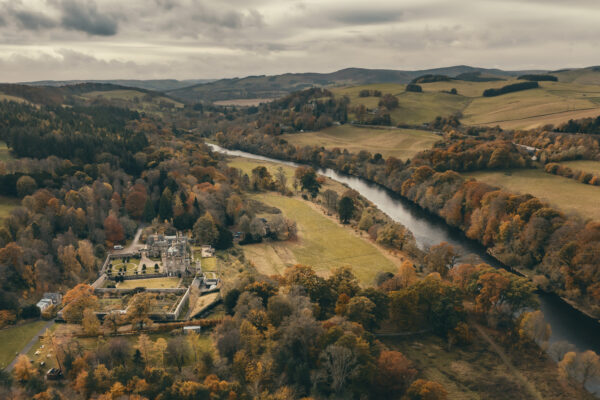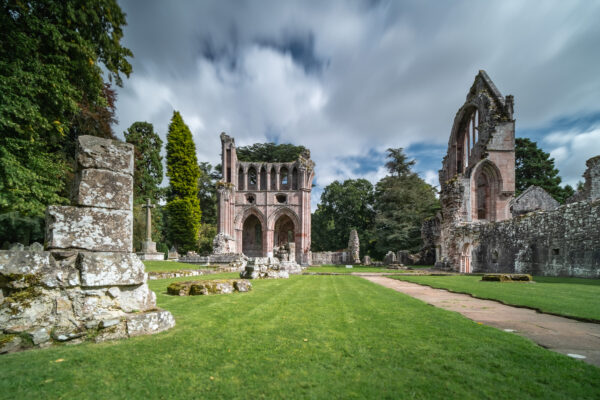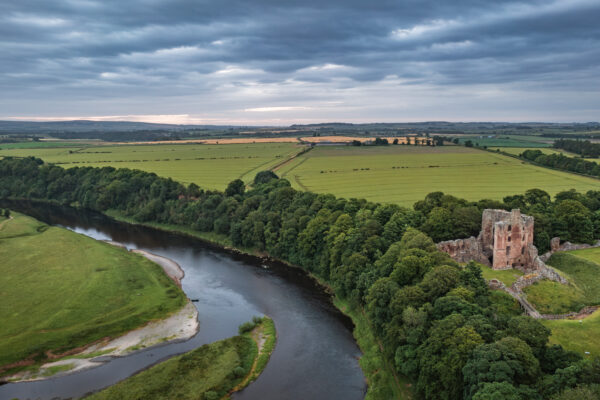A figure well known to communities along the Tweed, Merlin casts a mythical shadow over the area although only glimpses are known of the man and his life in the historical record.
According to the medieval tale, ‘The Life of Merlin of the Forest’, Merlin lived in the woods of the South of Scotland in the late 6th Century. He was forced to flee here after his kinsmen were slaughtered at a great battle in Northern Cumbria.
Probably one of the last great druids, Merlin was said to be ‘unique in his powers of prophecy’ and foretold his own death. He expounded that he would be crushed by stones and cudgels, pierced by a sharp wooden stake and finally drowned. This appears to have come true…
Held captive at Tinnis Castle by Meldred, a client-king in the South of Scotland, to gain his freedom Merlin interpreted riddles uncovering the Queen’s many affairs. Incensed by these accusations, the Queen hired assassins to follow Merlin and attack him. After being pelted by stones and beaten, legend has it that Merlin stumbled along the River Tweed where he fell off the bank on to the sharp stake of a fish trap landing face down in the river where he then drowned in the turbulent waters!
You can visit the reputed site of Merlin’s grave near Drumelzier, which has been marked on maps since the 18th Century.
Merlin’s death is also connected to one of his most famous prophecies about the River Tweed. He foretold that when burn and Tweed waters would meet at his grave, Scotland and England would have one king. This happened when the Tweed flooded in to the burn at Drumelzier in the year when James VI was crowned James I of England, 1603.



